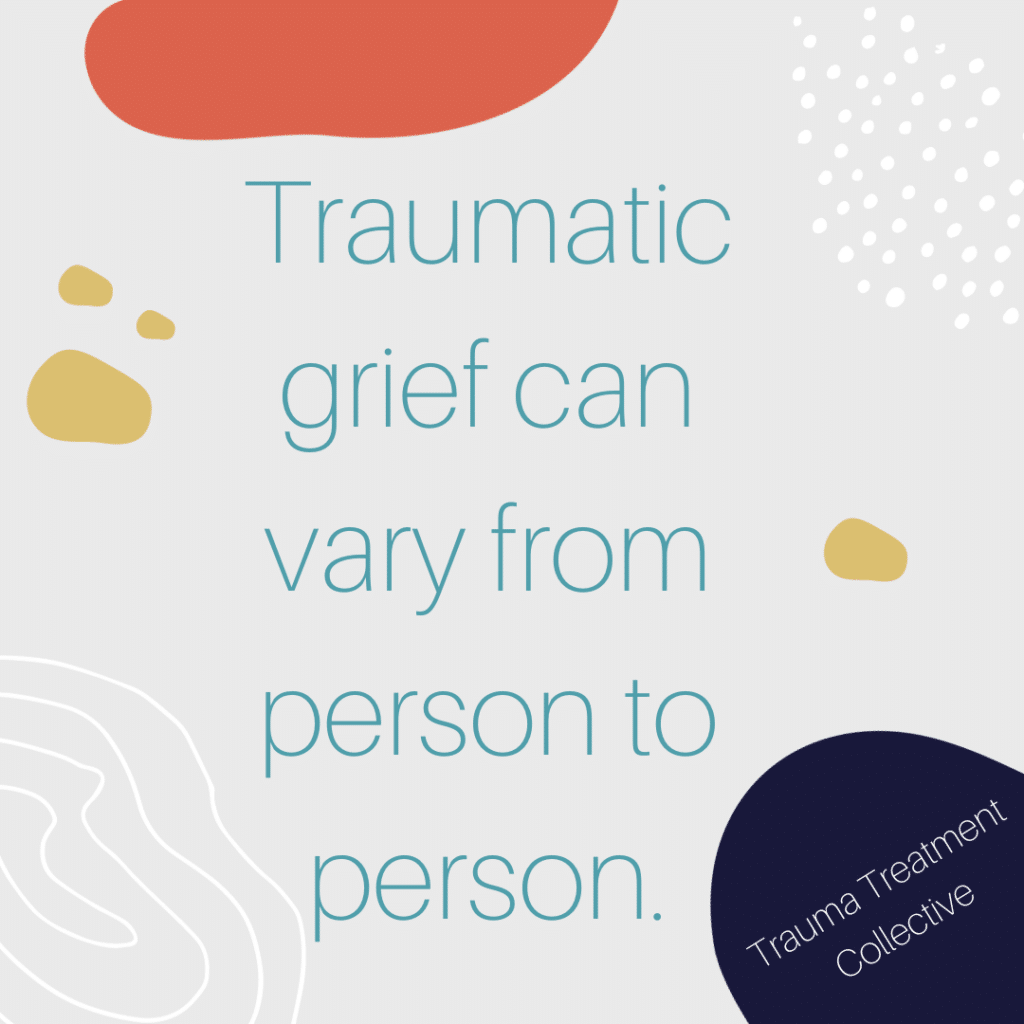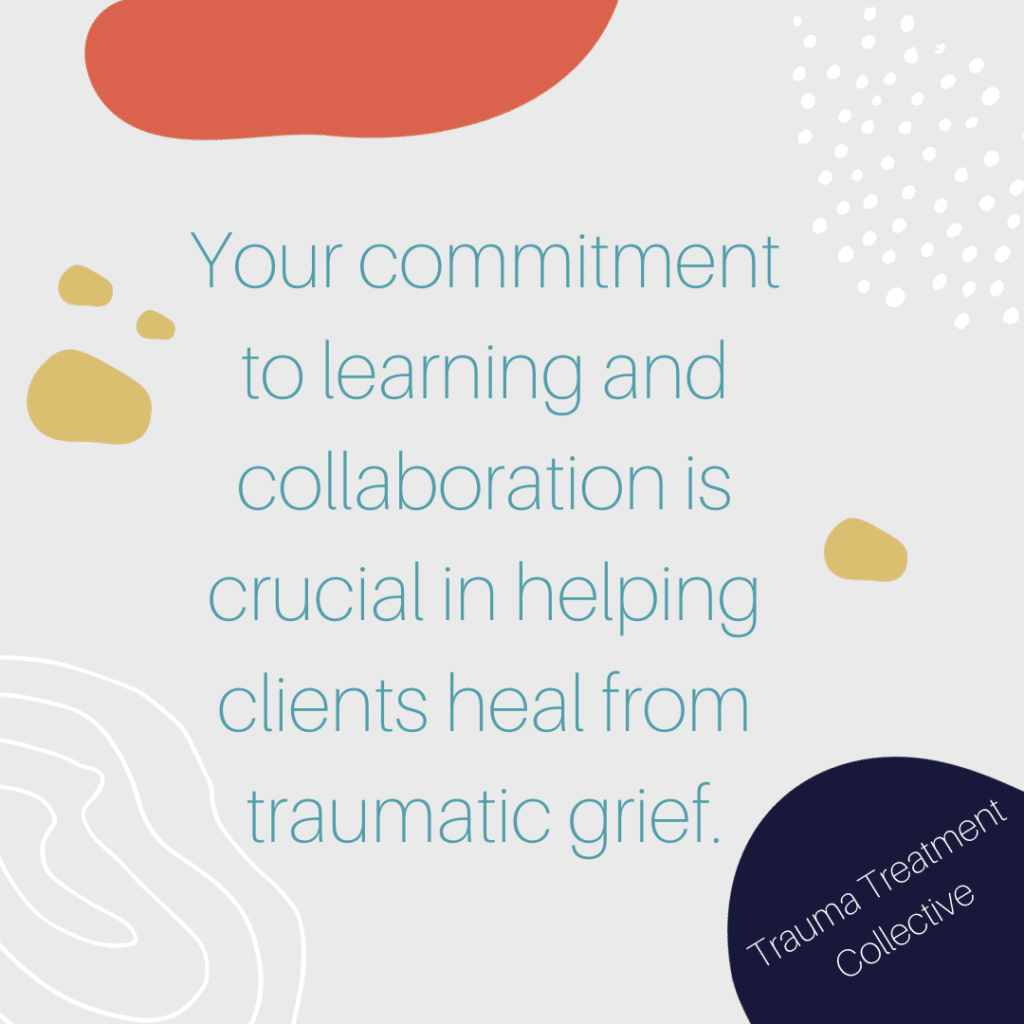Welcome to another installment of our blog series for trauma treatment professionals. This month, we delve into a topic that is both challenging and essential to our work: traumatic grief. Traumatic grief often arises in clients who have experienced the sudden and unexpected loss of a loved one. Some examples of sudden loss might include loss through violence, overdose, suicide, or a medical crisis. Another contributing factor to traumatic grief is complicated relationship dynamics. Examples of this might be strained parent-child relationships or estranged partners. The grief process becomes complicated when clients are left with unanswered questions, intensifying their emotional struggle. In this blog, we will explore the symptoms and characteristics of traumatic grief, as well as effective interventions and referral options.

Identifying Traumatic Grief
Before we can effectively help clients who are dealing with traumatic grief, it’s crucial to accurately identify the condition. While the symptoms of traumatic grief can vary from person to person, the following are some common characteristics to assess for:
1. Preoccupation with the deceased: Clients may obsessively think about the deceased person, making it difficult to focus on other aspects of their life.
2. Feeling like they have died with the deceased person: Some clients may report feeling as though a part of themselves has died along with their loved one.
3. Upsetting memories about the deceased person: Intrusive and distressing memories related to the deceased can be a sign of traumatic grief.
4. Hearing the voice or seeing the loved one: Some clients may experience hallucinations or vivid dreams of the deceased. Be careful not to confuse your clients spiritual or cultural practices with mental distress or illness.
5. Longing to be with the deceased again: An intense desire to be reunited with the deceased is a common feature of traumatic grief.
6. Avoidance of feelings associated with the loss: Clients may go to great lengths to avoid thinking or talking about their grief.
7. Intense regret: Feelings of guilt, regret, or responsibility related to the loved one’s death may be overwhelming.
8. Shock and disbelief: Traumatic grief can leave clients feeling as though the loss is unreal or surreal.
It’s important to remember that traumatic grief is a highly subjective experience, and individuals may exhibit a combination of these characteristics to varying degrees.

Suggestions for you
As a trauma treatment professional, you may find it beneficial to collaborate with grief-focused specialists when dealing with clients experiencing traumatic grief. Here are two interventions that can help your clients, along with suggestions for referral sources:
1. Working with the Double Bind: Clients often experience conflicting impulses related to their grief. For example, they may want to visit the grave site of their deceased person but also feel a strong urge to avoid it. To help them navigate this and other double binds, identify both impulses and create space for exploration. By understanding these conflicting feelings without having to choose one over the other, clients gain clarity about their thoughts and emotions, leading to more adaptive behaviors.
2. Creating Safety for the Loved One: In cases of enmeshment between the client and the deceased, encourage clients to think about what their loved one needs, whether real or imaginary. This could involve emotional support, resources, or protection. When clients can envision the deceased having their needs met, it can help them separate their identity from that of the deceased person, promoting personal growth and healing.
Referral Sources
Consider referring clients to specialists in the following areas when dealing with traumatic grief:
– Grief-focused therapists: Individual, group, or art-focused grief therapy can provide specialized support.
– Art Therapists: Utilizing creative expression can be a powerful tool for processing grief.
– Drama Therapists: Incorporating dramatic techniques can help clients express and explore their emotions.
– Couples Therapists: For clients in relationships, addressing grief together can strengthen the bond.
– Group Therapists: Group settings offer opportunities for shared experiences and support.
Remember to maintain open communication with these providers to ensure comprehensive care for your clients.
Traumatic grief is a complex and deeply personal experience that can significantly impact your clients’ lives. Identifying the characteristics of traumatic grief and collaborating with grief-focused specialists can enhance your ability to provide effective trauma treatment. Remember, the journey to becoming a more effective trauma treatment professional is ongoing, and your commitment to learning and collaboration is crucial in helping clients heal from traumatic grief.

